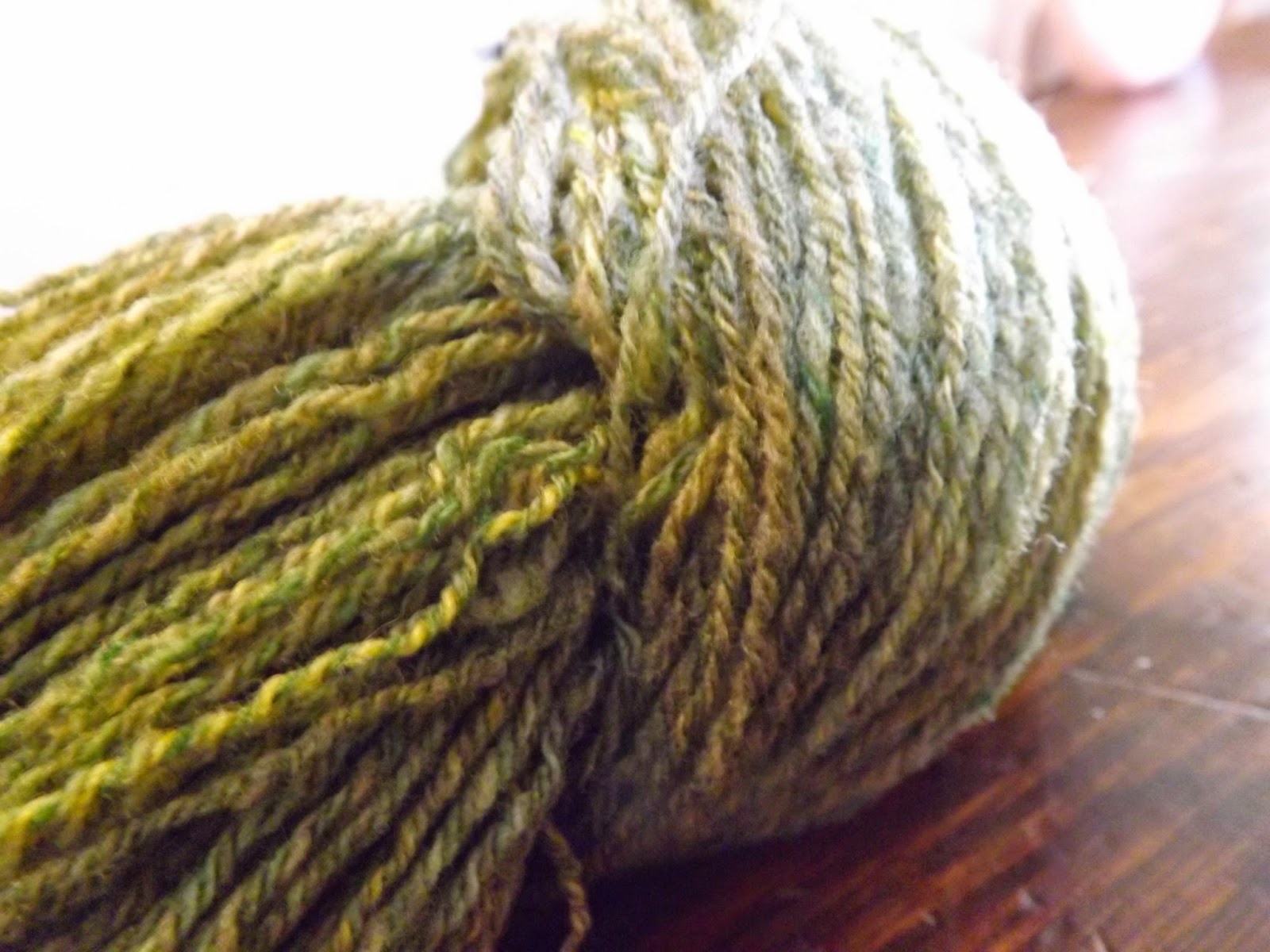 There's a lot of details you want to get right about sock yarn. It has to be strong, if you don't want your socks to wear out, but it should also be somewhat elastic. For this reason, semiworsted spinning is often preferred. Blue-faced Lancaster is one popular wool for sock yarn; others prefer superwash or one of the felt-resistant down breeds like Devon. I only had Rambouillet, so that's what I used.
There's a lot of details you want to get right about sock yarn. It has to be strong, if you don't want your socks to wear out, but it should also be somewhat elastic. For this reason, semiworsted spinning is often preferred. Blue-faced Lancaster is one popular wool for sock yarn; others prefer superwash or one of the felt-resistant down breeds like Devon. I only had Rambouillet, so that's what I used.I used the wool I had dyed previously with black walnuts, coffee, and food coloring.
I spun it pretty much as fine as I could, which wound up being about 60 wpi in the singles.
I aimed for about 400 yards, which apparently is what you need for an average pair of socks. You should be able to get that out of 4 oz. of wool, but I have no idea what weight I used -- I don't have a scale.
Then I three-plied the yarn, for extra strength. Three-ply is a big hassle compared to two-ply -- half again as much spinning to do, and then three balls of singles trying to get away from you as you ply -- but the results are definitely more durable.
The final thickness of the yarn was 22 wpi -- good for knitting on size 1 or 2 sock needles.
I was really happy with the way the colors blended and interacted in this yarn. The color changes happen every 30 yards or so, shifting from green with bits of yellow to brown with bits of green. If I knit it up, I'd find subtle bands of colors interacting.
I had a goal in my mind while I spun this yarn -- to get it done before my daughter was born in late August. I had my doubts that I'd make it, considering what slow going it was and my history of going into labor early. But in the end, I did get it finished with several days to spare.
My intention was to sell this yarn. And it's certainly good enough -- it is truly fabulous yarn, strong, soft, springy, and just beautiful. Not a lot of flaws in it anywhere. However, considering it took me a month to make, I'm not sure how I'd price it. Most spinners agree that charging less than ten cents per yard per ply is undercutting those who spin professionally, making it impossible for them to make a living. So that would give me .... 400 yd x 3 plies is 1200 ply yds; 1200 x 10 cents is $120. As a minimum, not counting the high quality of the wool or the natural dyeing.
Do you know anyone who would pay $120 for socks, even the world's most gorgeous socks (as these certainly would be)? I have my doubts. So perhaps someone I know will have to get a truly princely gift. You see why handspun available online is often in small hanks -- 100 yd of singles, for instance. Spinners can make more, but not many can afford to buy it.
More pictures of my absolutely gorgeous yarn:
So far it's the spinning project I'm proudest of!




No comments:
Post a Comment